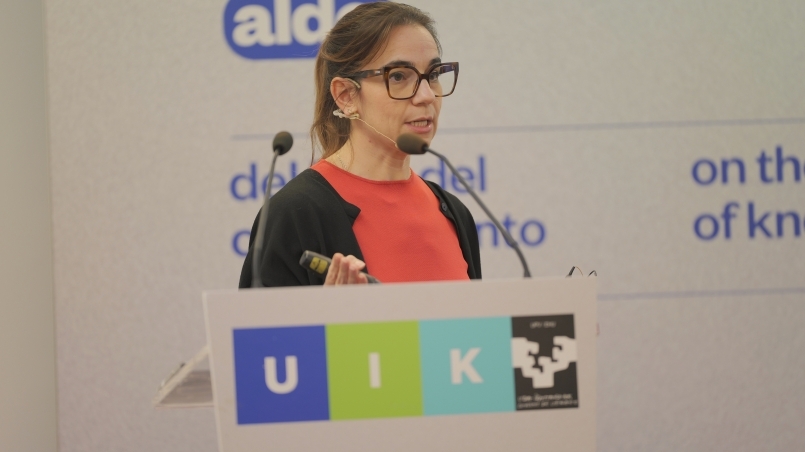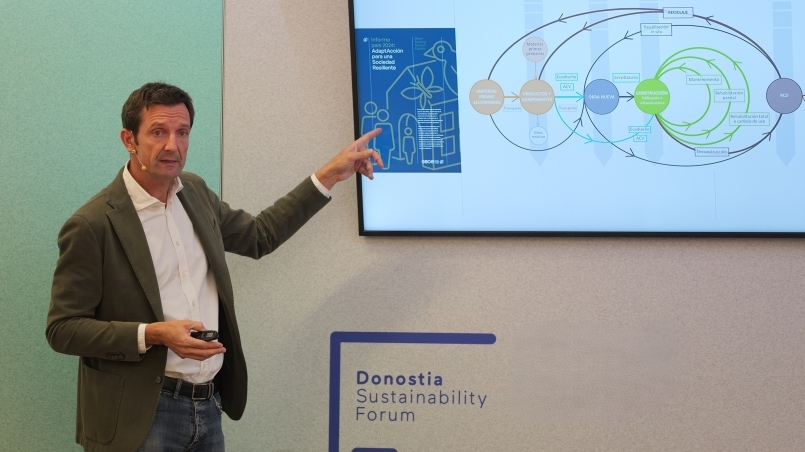The environmental pollution enters the fetus through the placenta
<p> INMA Childhood and Environment Project.</p> <p> The INMA project arises from the interest to identify the effects of exposure to different environmental factors during pregnancy and its effects on the physical and neuropsychological health of the child.</p>

The study has been carried out for 15 years in Valencia, Asturias, Sabadell and Gipuzkoa with women who went to their first ultrasound consultation, became pregnant and admitted rigorous control of pregnancy, and , later, the development of the child (www.proyectoinma.org)
Aitana Lertxundi, professor in the Department of Preventive Medicine and Public Health at the Faculty of Medicine and Nursing, is one of the people coordinating this study in Gipuzkoa. Her line of research is environmental epidemiology and the line she has worked on most in her research career is atmospheric pollution. According to her, one of the atmospheric pollutants with the greatest impact on health in general and reproductive health are particles 2.5µm in diameter or less and nitrogen dioxide (NO2, an indicator of road traffic in cities).
Aitana Lertxundi pointed out that "Our findings reinforce the evidence that exists to date on the harmful effects of air pollutants in the first years of life. Women more exposed to PM2.5 and NO2 have a higher risk of prematurity as well as worse lung function and cognitive scores in early life".
Living in a town like Aia or in Barcelona or Madrid, which exceed the recommended levels of the air quality directive, is nothing alike. According to the findings found in INMA, as in other studies internationally, it has been shown enough to say that the period of pregnancy is a crucial period for the growth of the fetus. It is clear, therefore, that depending on which city she lives in, the pregnant woman leaves one inheritance or another to her child.
According to the results obtained in INMA, the most vulnerable week of gestation in relation to air pollution and the effects linked to low weight and prematurity, is the third trimester of pregnancy. The assessments being made in INMA coincide with another study conducted by Aitana Lertxundi with 20,000 pregnant women in Gipuzkoa, from 2013-2015. This is the study commissioned by the Provincial Council of Gipuzkoa in connection with the implementation of the energy recovery center of Zubieta. According to this study, the risk of prematurity is similar in the surroundings of Donostia and in the valleys where the iron and steel industry has had greater weight. Abortion cases cannot be evaluated since they work under the birth registry and therefore this information does not exist. The Zubieta study is a study prior to the centers opening and in a few years they will carry out a subsequent study to be able to establish a comparison.
The negative effects of environmental pollution have been studied for a long time. For 50 years we have known the harmful effect that some pollutants have derived from exposure over a few days, but there was little information on the effects over a long period of time. On days of thermal inversion we know that we have a high risk of mortality and hospital admissions in elderly people and especially in people with a history of respiratory problems in our cities. But little is known about the long-term effects of long-term exposure. Thanks to the INMA study and other follow-up studies, we can assess whether a legally acceptable long-term exposure has an impact on health. "For example, even if people are exposed to levels lower than those set by the directive, we still see that it has harmful effects on health". According to Aitana Lertxundi, "there is no emission value below which there is no risk". In the case of particles, in addition to this, it should be added that their composition is different depending on where we live and therefore their effect could be different.
PM2.5 and the endocrine system.
The last interesting finding analyzed in INMA in relation to PM2.5 has been the alteration of thyroid hormones in pregnancy and at birth. This is evidenced by two studies of Aitana Lertxundi's team, which has also found by collecting blood samples in the 20th week of gestation and by neonatal heel prick, that the particles are altering the thyroid hormones of the mother and newborns. This is one of the lines we want to continue working on to find out the reason for this alteration.


